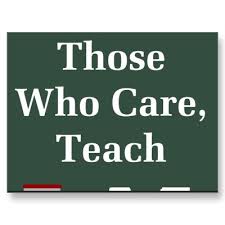Teacher not Caretaker
Recently, I had the opportunity to meet with Kristy Sullivan, Direct Support Professional (DSP) at Grafton’s Village 193 group home to discuss her role in helping clients meet their goals. Kristy has worked at Grafton for a year and was excited to share her perspectives on the importance of client engagement, teaching and skill acquisition in delivering sustainable outcomes.
Pam Martin, Training Support Manager recently shared that you had remarked you are a teacher not a caretaker. Can you expand on that?
I work with clients with varying functioning levels and for the longest time, there were assumptions that clients had reached their full potential. They had learned everything they could. I learned very quickly that this was just not the case. I work with a client who loves coffee and every day, staff would brew his coffee and give him his coffee. With the integration of ABA within our homes, staff was challenged to not necessarily keep doing things for the clients we serve, but rather teach them the skills they needed. We initially started with hand over hand prompts to assist John to make his own coffee. Slowly, we added additional expectations including, lifting his hand to remove the filter, add coffee, press the button. Visual icons are frequently utilized to help clients who are nonverbal. Over the course of three months, John learned to make his own coffee. We all know sometimes it is easier just to do things for our clients. Our roles however are to help clients move towards independence. In the end, they are more successful if they are able to meet their own needs. Also, when teaching foundational skills such as how to “pay attention”, there are many surprises we get to witness. When a client becomes more skilled at paying attention, they begin to notice (and learn from) their peers’ behavior! We have seen a few clients spontaneously exhibit behaviors that we were not actively teaching. Behaviors such as turning on a shower faucet, getting a glass of water, pushing their chair away from the table, and pulling on clothes have been learned through attending to their peers’ behavior.

How has the visual based schedules and integration of ABA changed how you approach and work with clients?
It has taken a lot of time, but essentially, it has raised our expectations of each other as employees and raised expectations that we have of clients. They are able to do a lot more than we initially anticipated. We are not babysitters for our clients. Our roles are to teach and empower our clients. It actually makes our jobs easier.
How do you assess progress with the clients and what impact does this have on you as an employee?
We know our clients are making progress because the data supports this! We use the Assessment of Functional Living Skills or AFLS which is a tracking system that demonstrates a client’s current functional skills repertoire and provides tracking information for the progressive development of these skills throughout the lifespan. The AFLS contains measureable levels of independence regarding skills essential for participation in a wide variety and wide range of environments. Seeing the progression of skills attained actually puts things in perspective. It helps keep us as staff in line. Even though you don’t get immediate gratification, we know that we are having an impact. That certainly says a lot.
What specific progress have you noticed with the clients you serve?
Clients are not bored because we are always engaged with them. This results in decreased anxiety with our clients. If clients are busy and it is our job to keep them busy, they are less likely to engage in behaviors that are either self-destructive or disruptive. Not only is there a reduction in behaviors of this kind, there is an increase in skill acquisition behaviors with our clients. This not only makes our jobs easier as employees, but it is rewarding to know that the data demonstrates that we are making an impact. At the end of the day, that’s why we got into the field we are in.
What suggestions and ideas do you have to increase client engagement?